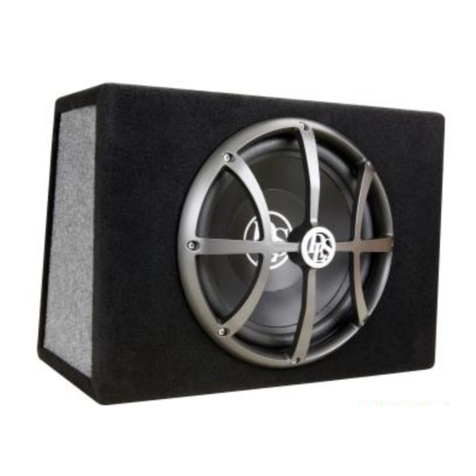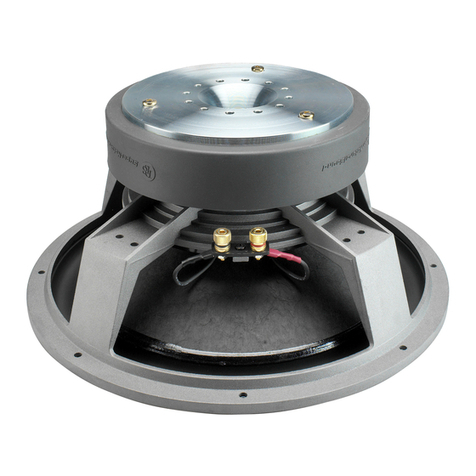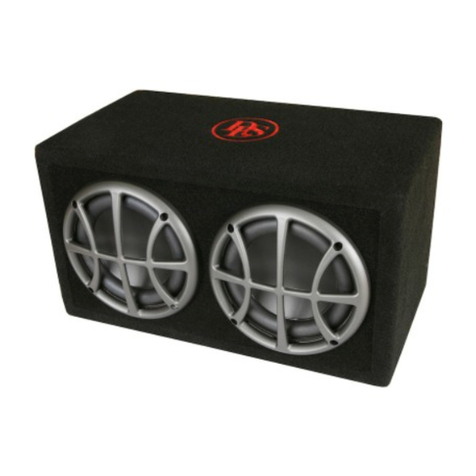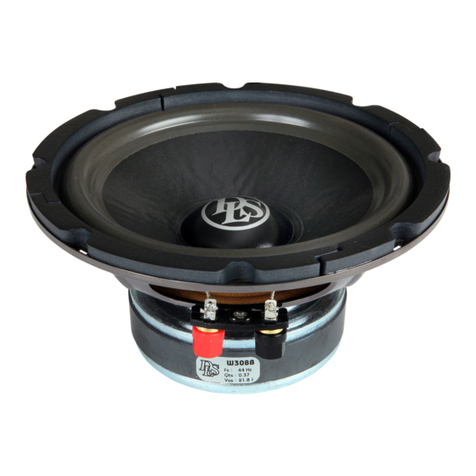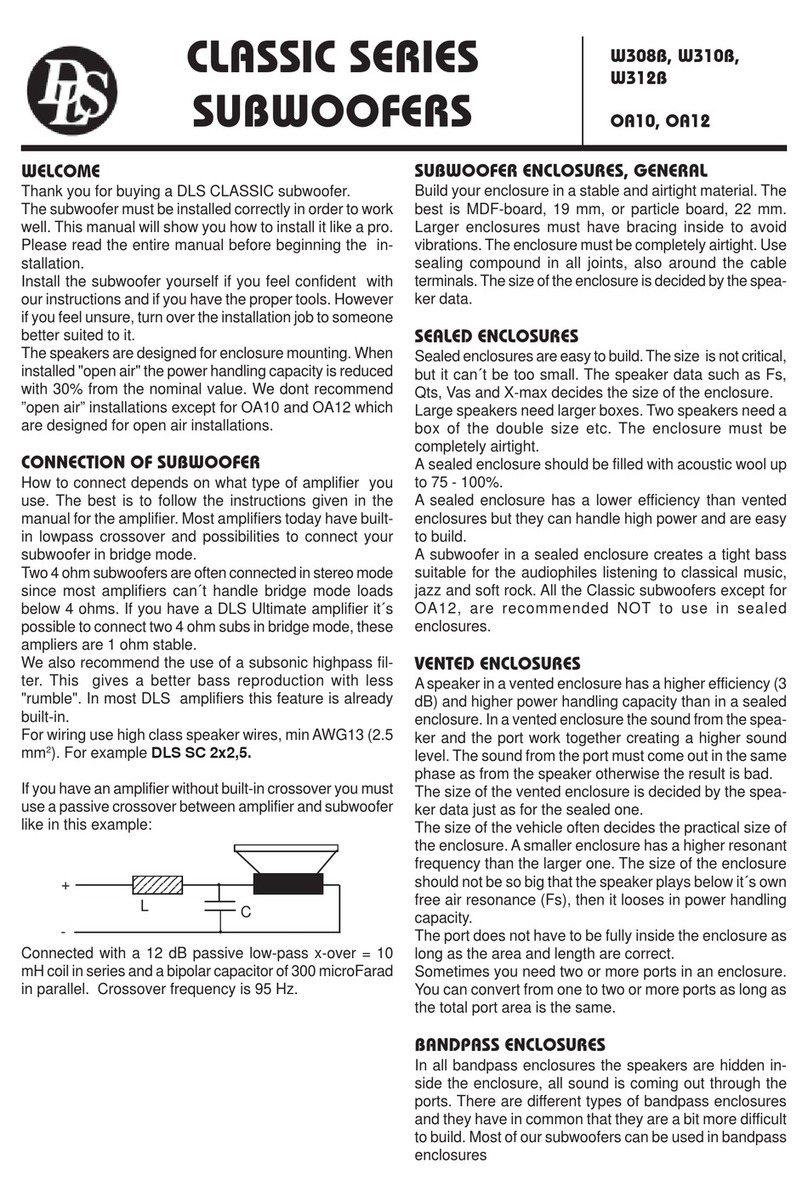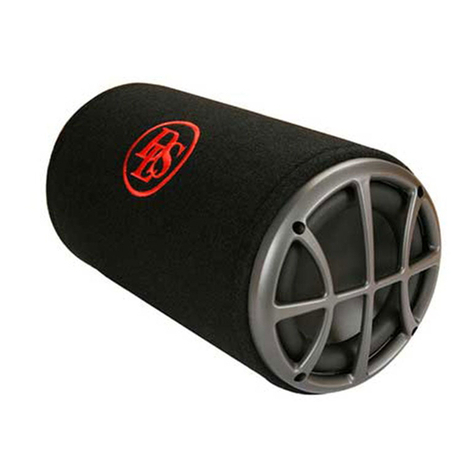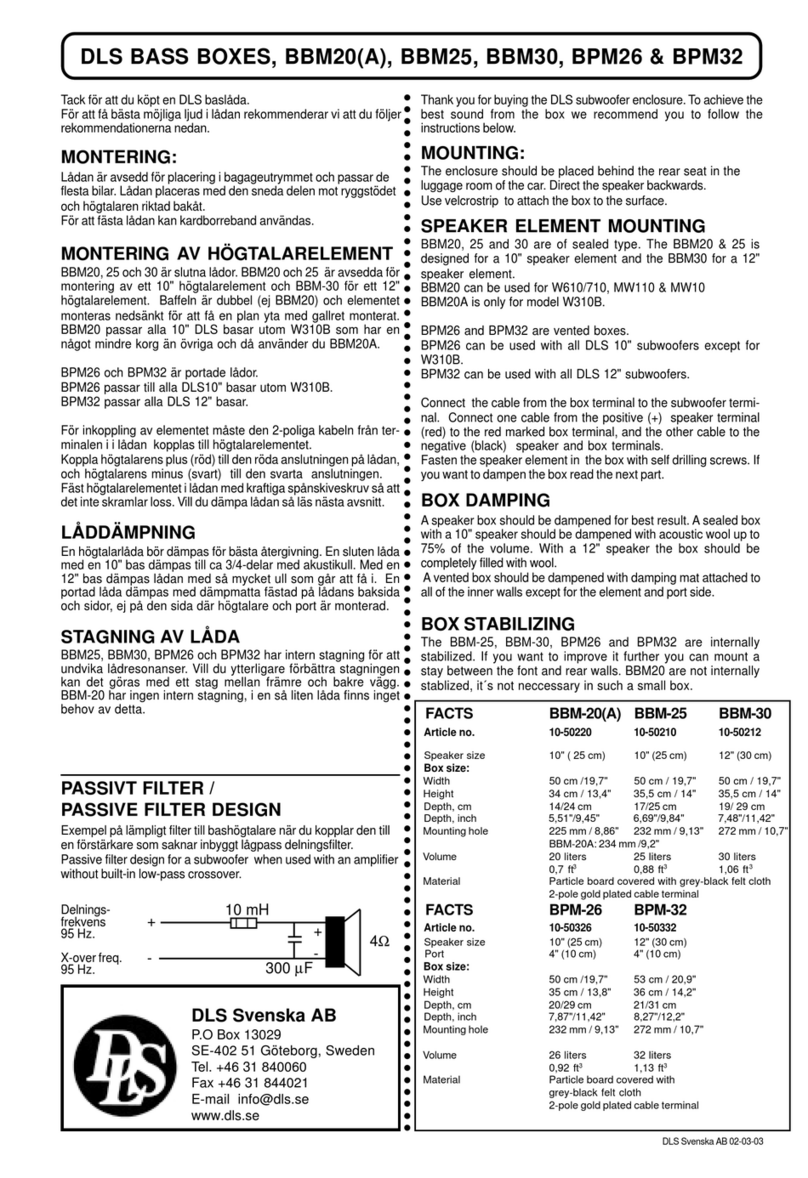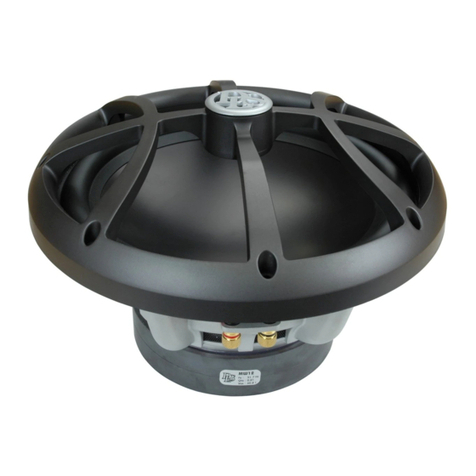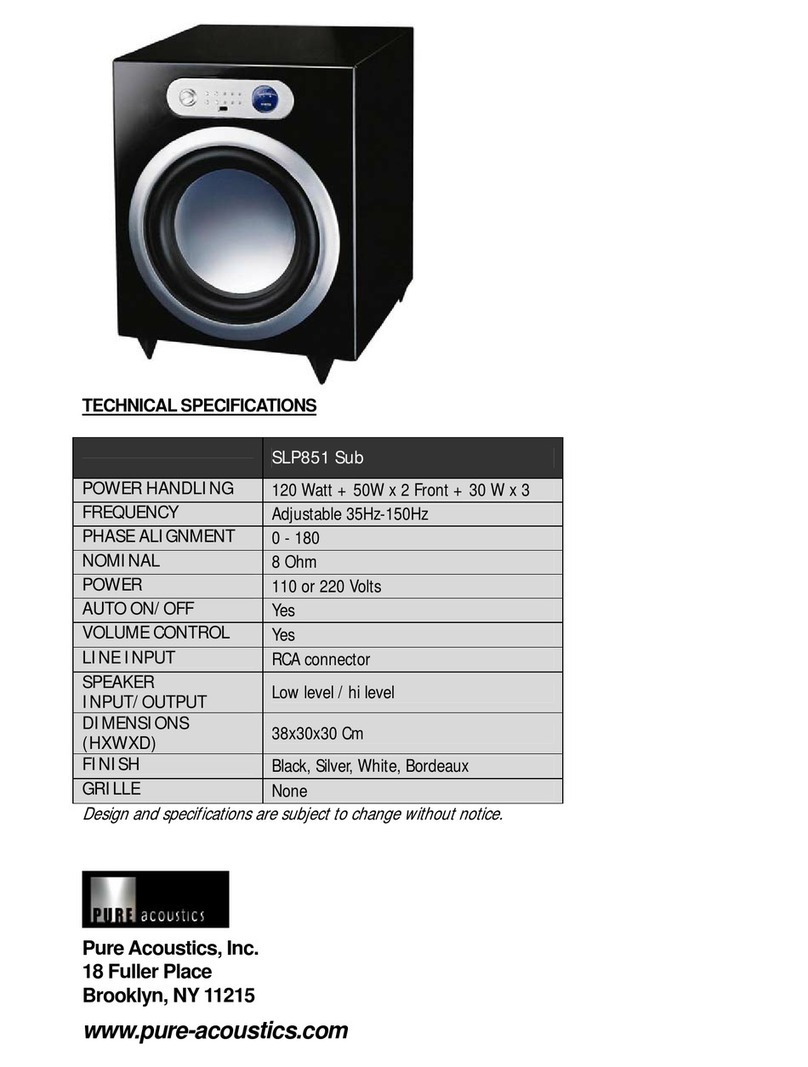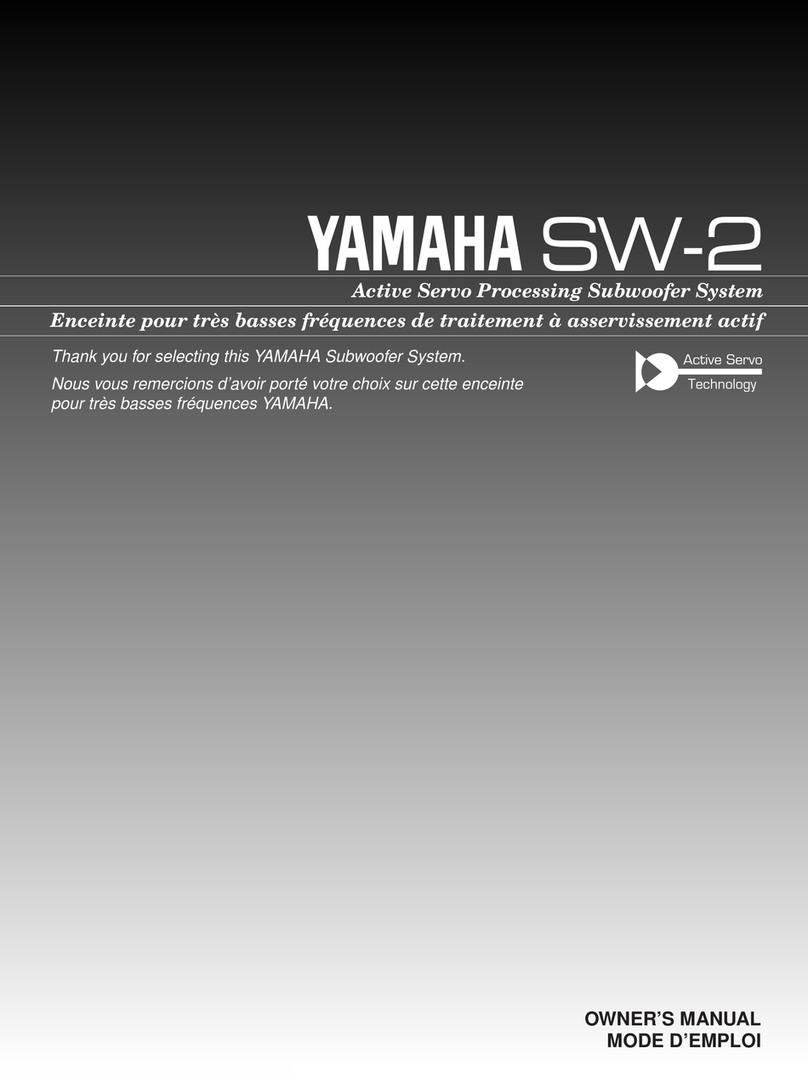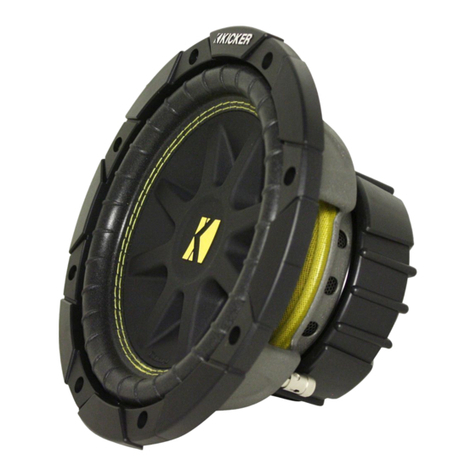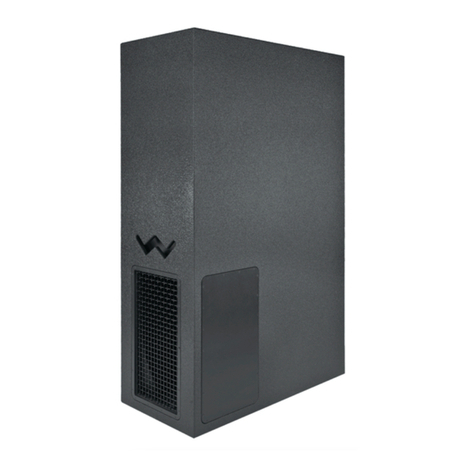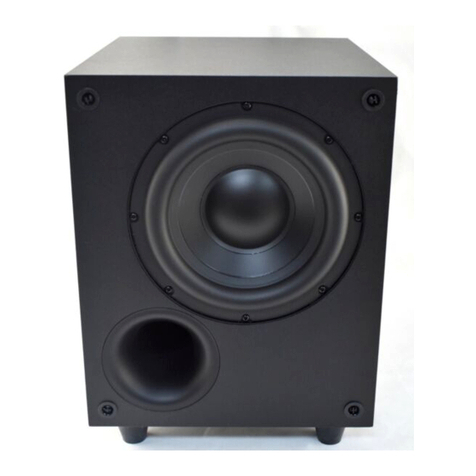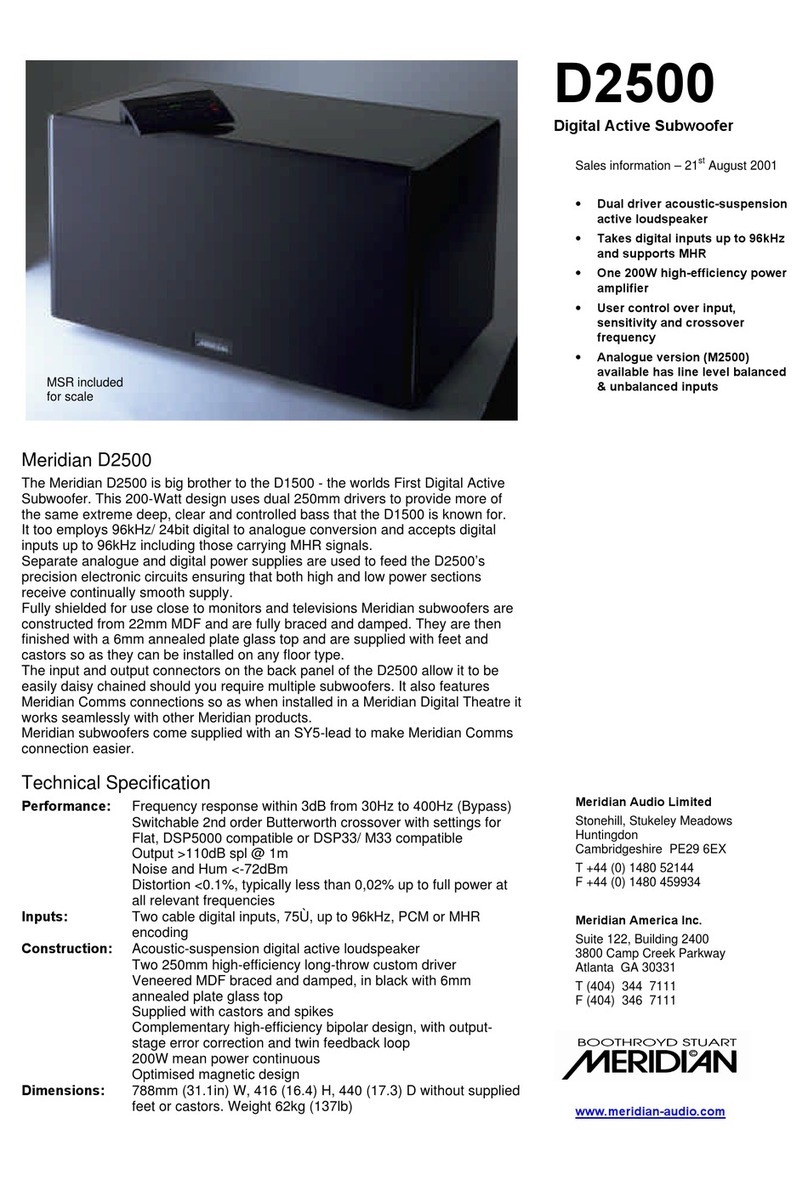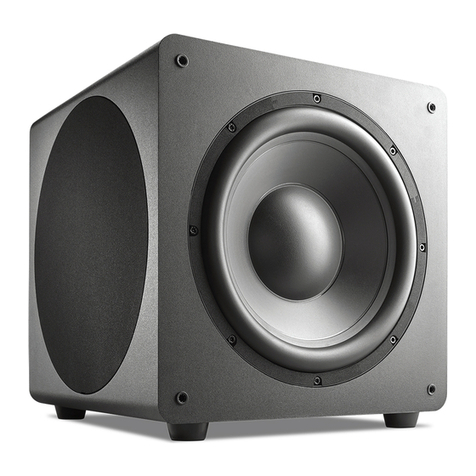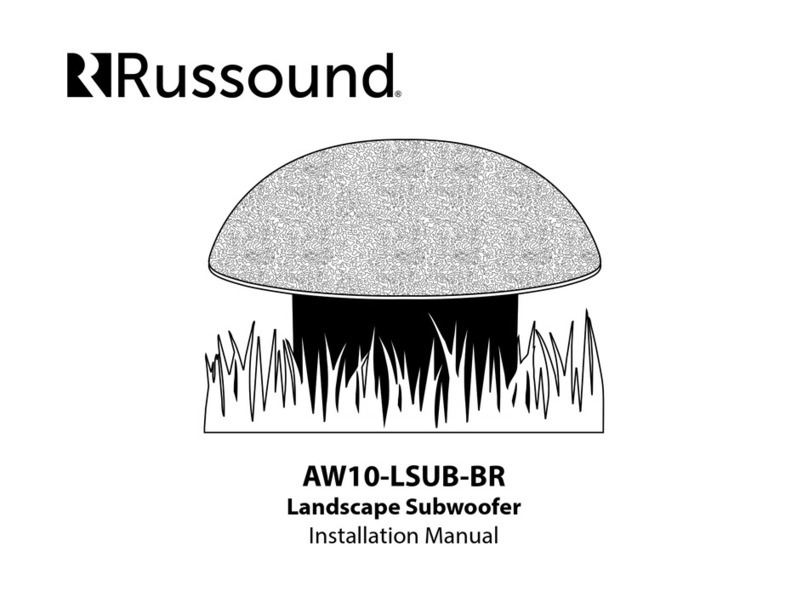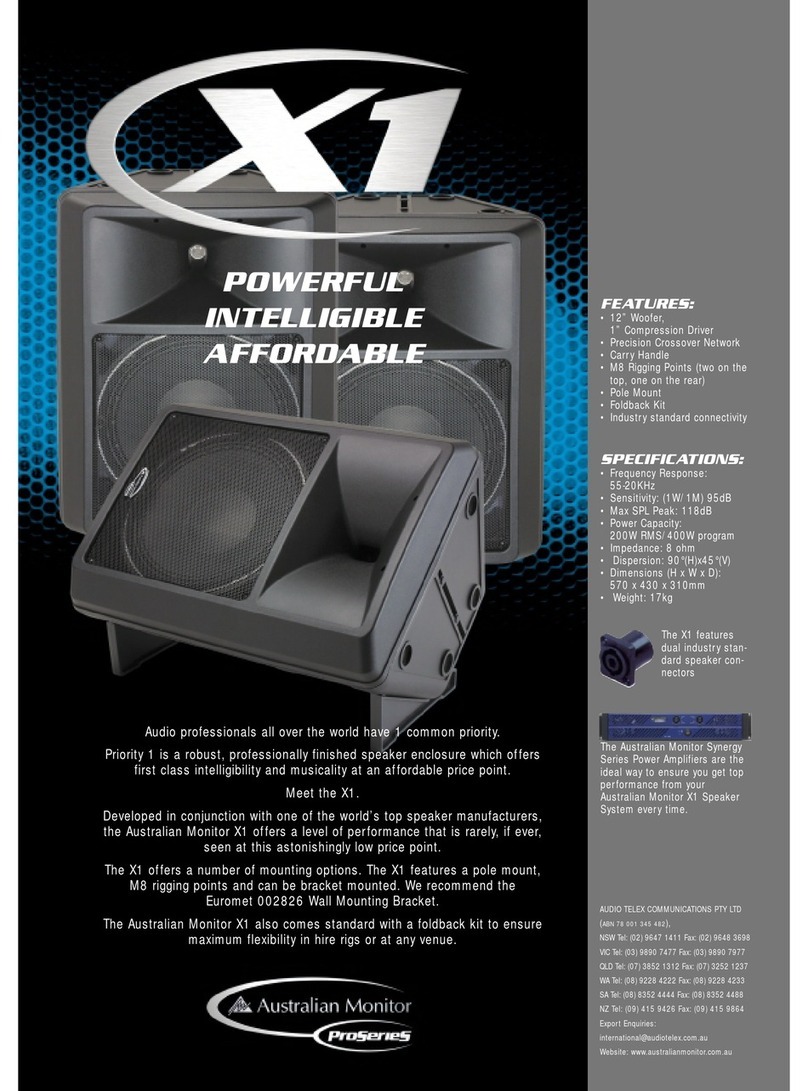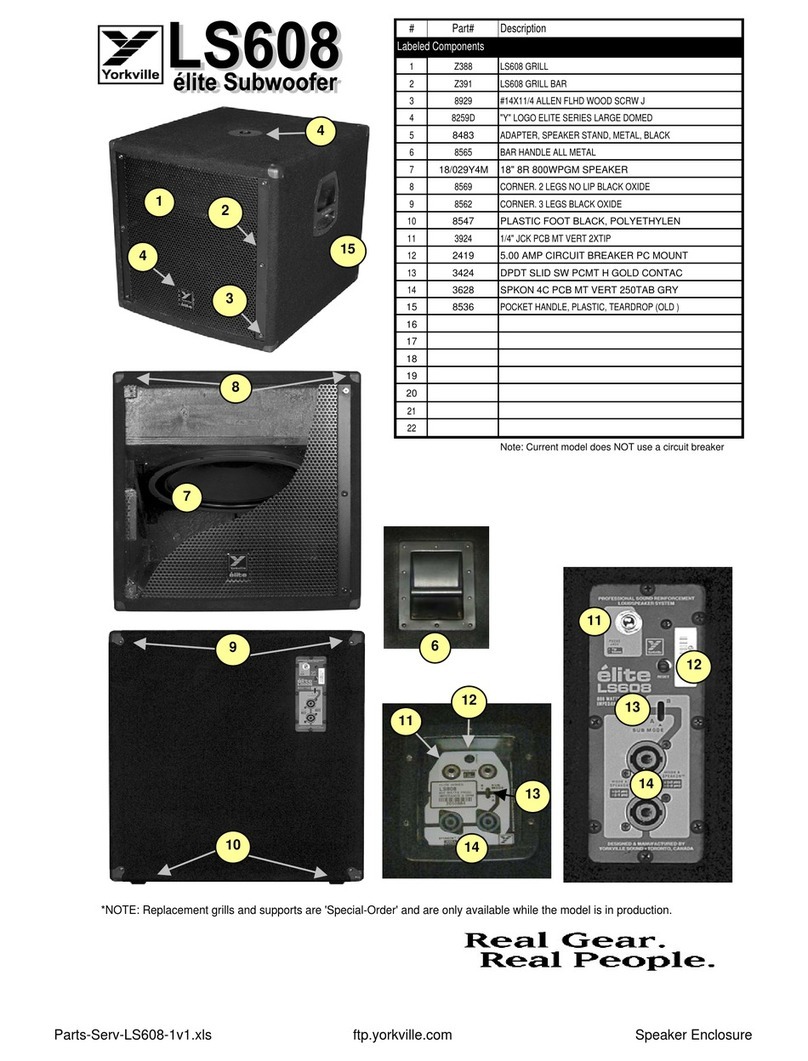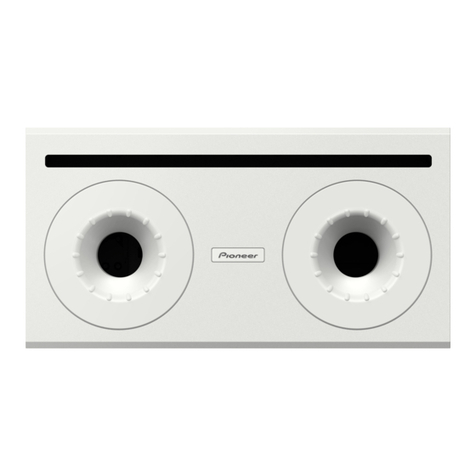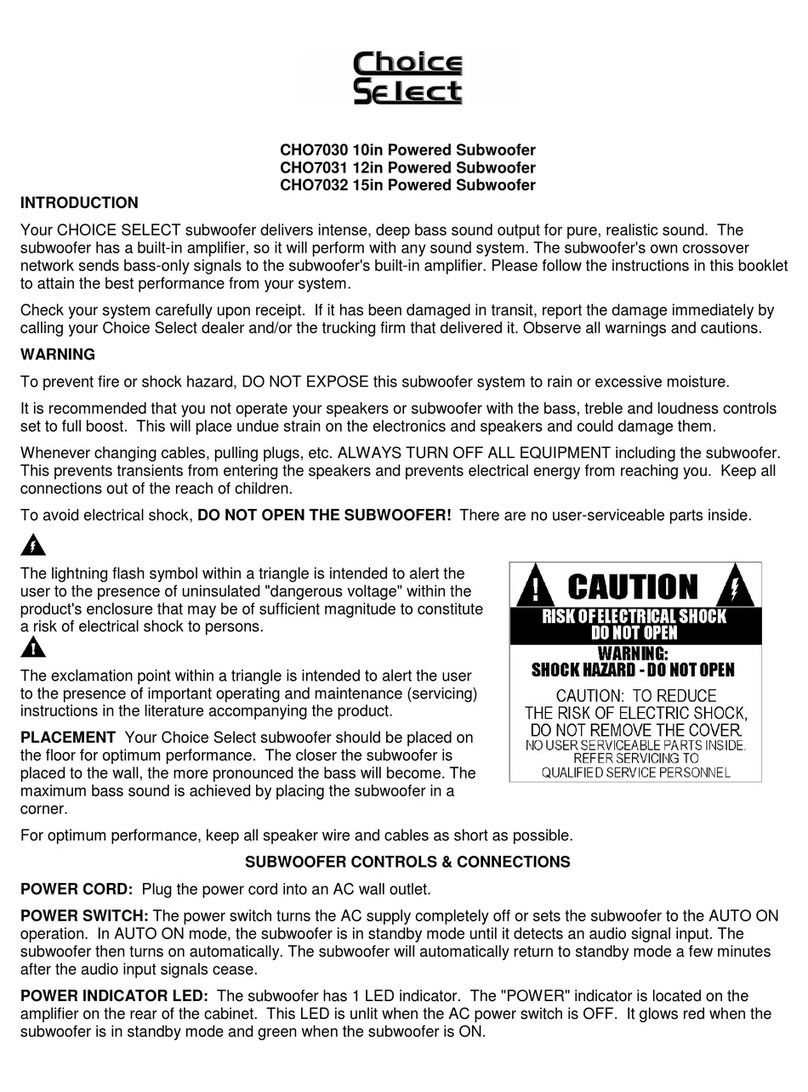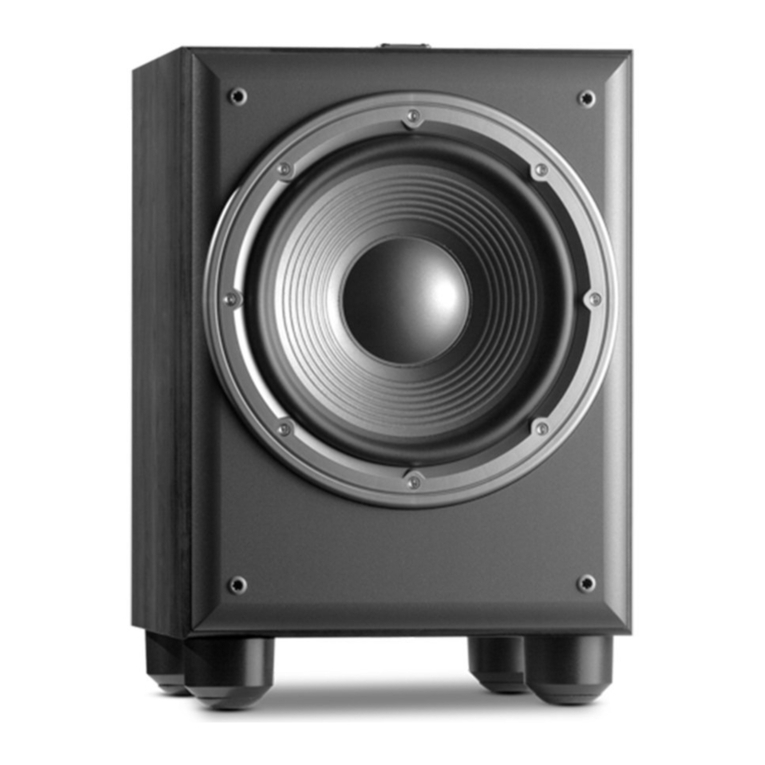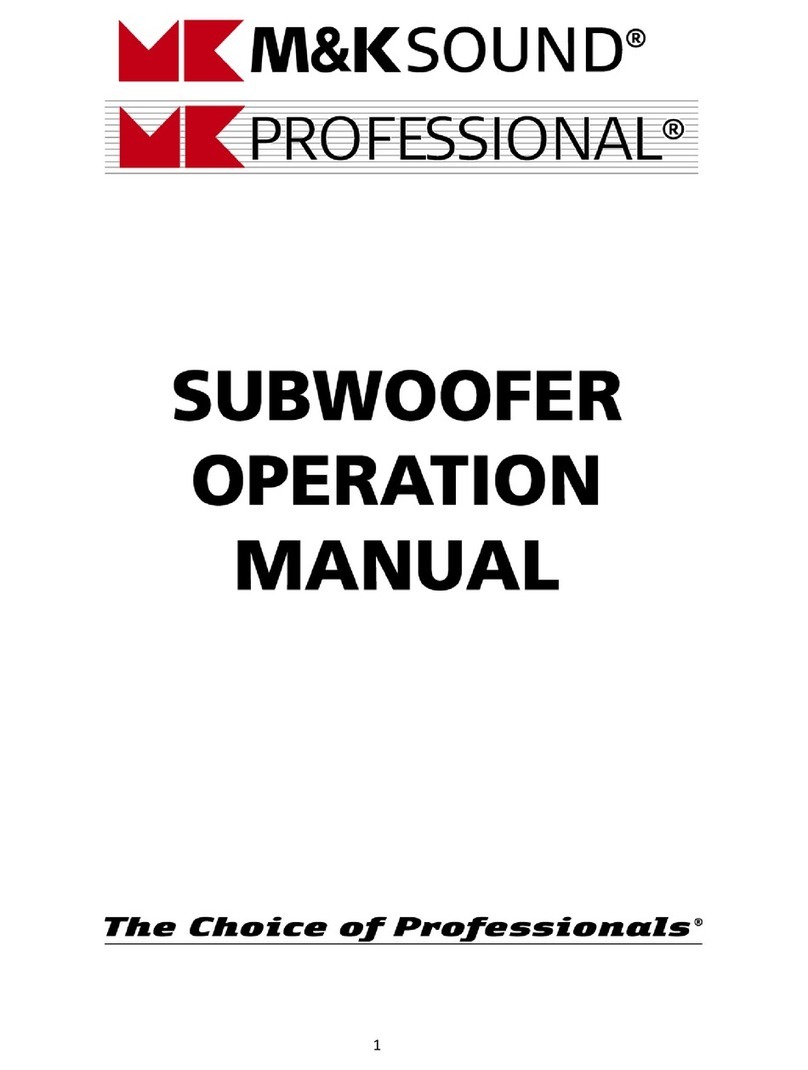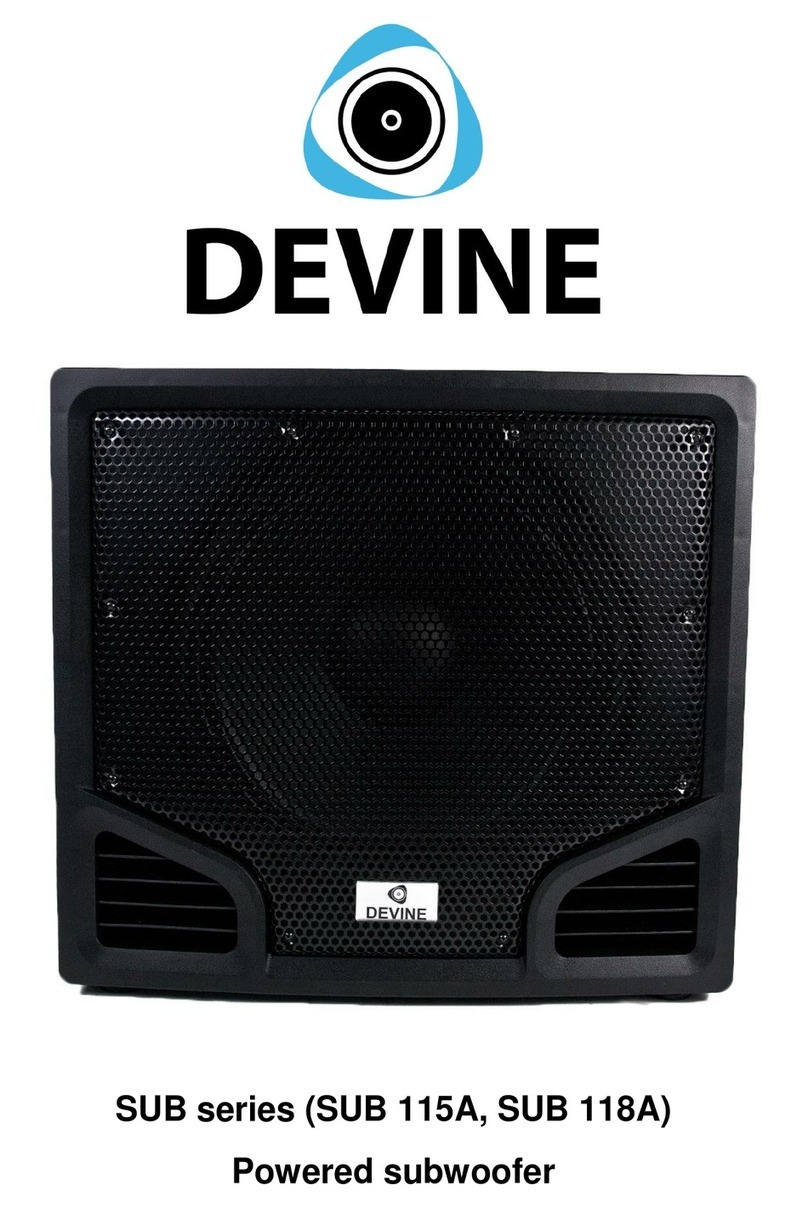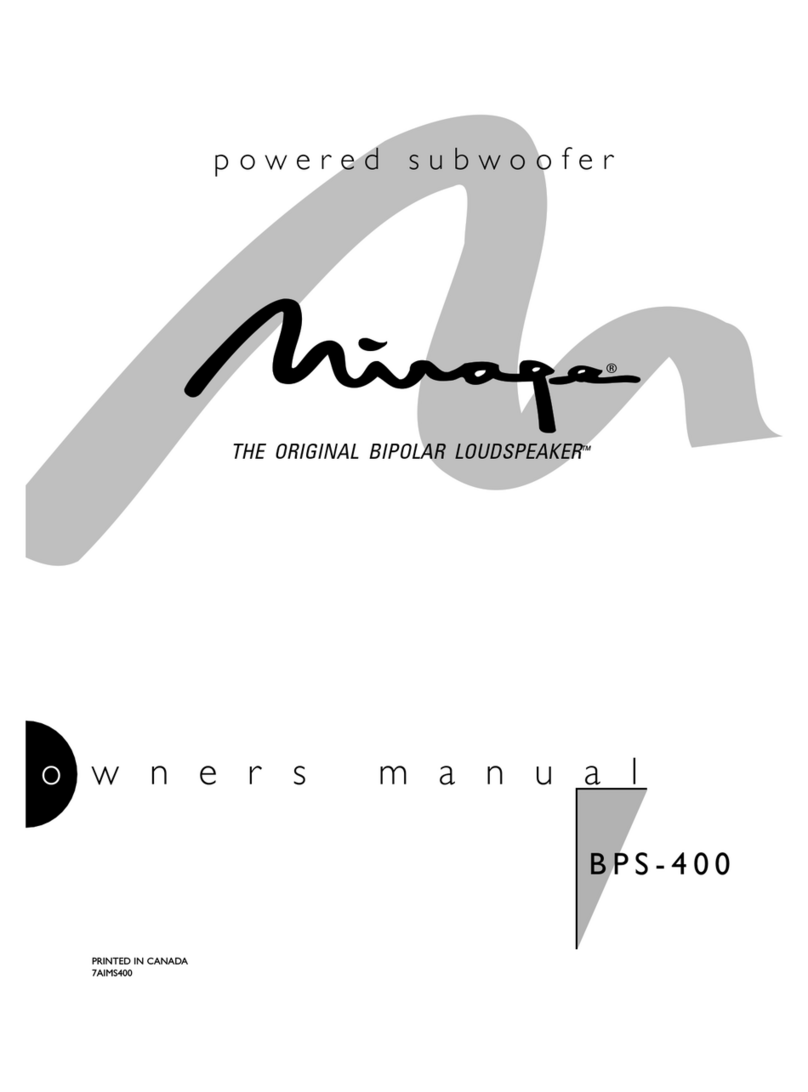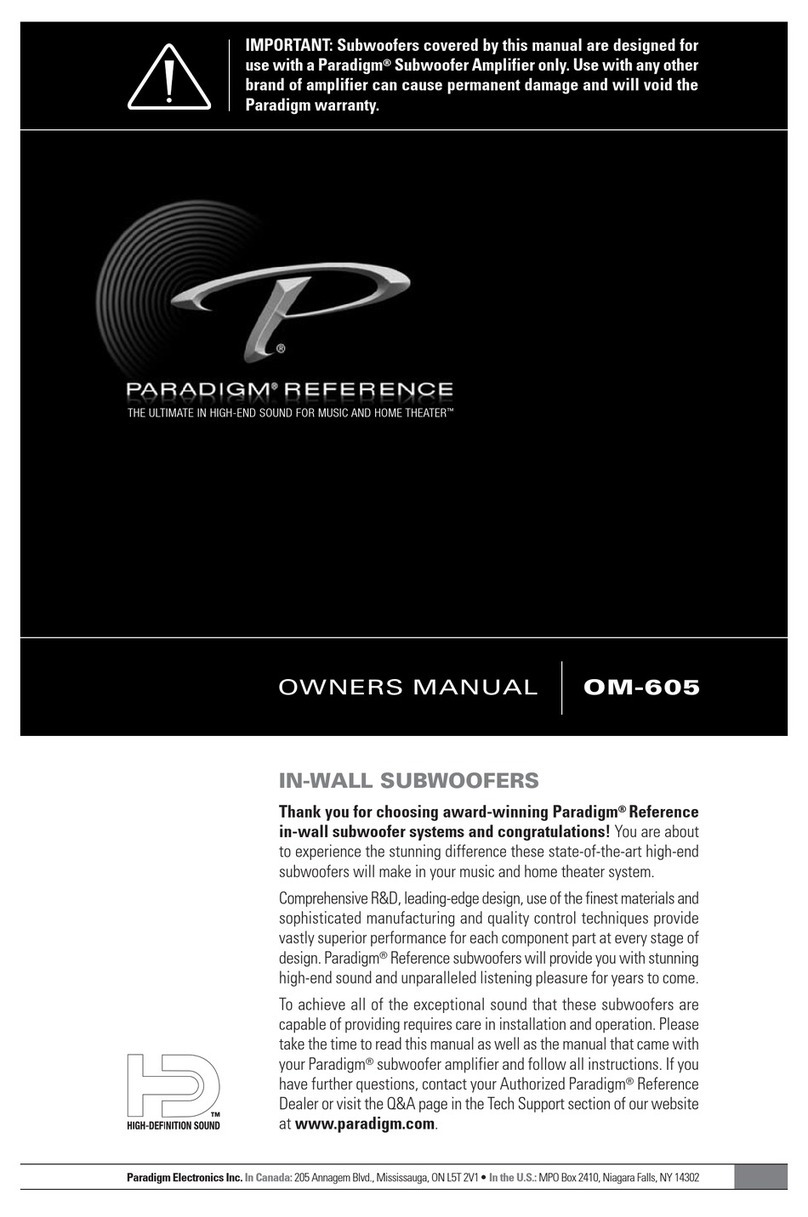DLS ACW10 User manual


Welcome!
This owners manual is written in easy english and
uses a lot of drawings to simply the installation and
use of the above amplifiers.
Your DLS amplifiers must be installed correctly
in order to perform at its best. This manual will
show you how to install the amplifier like a pro.
Please read the entire manual before beginning
the installation. Install the amplifier yourself if
you feel confident with our instructions and if you
have the proper tools. However if you feel unsure,
turn over the installation job to someone better
suited to it.
Warranty Service
This amplifier is covered by warranty, depending on
the conditions in the country where it is sold. If the
Subwoofer is returned for service, please include
the original dated receipt with the product.
Contents
Features…………………………….............. 2-5
Installation…………………….……............. 6-9
10-11
12
Troubleshooting / Testing…………………
Specifications………………………............
Technical Assistance
For technical assistance ask the shop where the
product was sold or the distributor in your very
country. Information can also be found on our
WEB-site www.dls.se
We follow a policy of continuous advancement in
development. For this reason all or part of specifica-
tions & designs may be changed without prior notice.
DLS Products are designed and engineered by:
DLS Svenska AB
Tagenevägen 11B, 422 59 Hisings Backa - Sweden
Tel: +46 31 840060
E-mail: [email protected]
www.dls.se
This product must be returned to the
separate collection system for electronic
products. Do not dispose this product
together with general household waste.
DECLARATION OF CONFORMITY
DLS amplifiers for vehicles are manufactured in
accordance with the EU directive EEC 95/54 (72/245/
EEC) and are marked with the approval number.
They are also marked in accordance with the WEEE-
directive 2002/96/EC.
The products are also produced in accordance with
the EU RoHS directive 2002/95/EC.
How to install and operate the
DLS ACTIVE SUBWOOFER
ACW10

4
1. Power Status Led
This bi-color LED glows green when power is
on and no problems are present. lf one of the
protection circuits comes on, it will change to
red.
2. Phase Shift
Use this switch to help compensate for time
alignment problems in the system. Such pro-
blems usually result from having the subwoofer
at a different distance from the listener than the
other speakers in the system.
3. Auto Power On
The auto power on (ON/OFF) is for high level
(speaker-level) connections. When the switch is
in the ”ON” position, the subwoofer auto power
on when there is signal input. Ifthe amplifier
detect no signal input, the amplifier will auto
turn off. lf you prefer to use the remote turn on/
off connection, set the switch in the off position.
Note: Please connect the remote terminal to the
remote output of head unit as
Fig.4. When you turn on/off the head unit a receipt
pulse can be heard from the subwoofer.
4. Low Pass Filter
This control permits you define the frequency
range you want the subwoofer amplifier to
receive. The subwoofer will reproduce all sound
BELOW the frequency you set.
Note: The low pass filter frequency can be higher or
lower than the visual scale.
5. Bass Optimize
The bass optimize controll feature will
enable fine tune of the deepest bass
frequencies.
6. Input Gain Control
After you have installed your system, turn this
control to minimum.
Turn the head unit on (and the subwoofer will
turn on via the remote connection). Turn the
head unit volume to about 2/3 full level.
Slowly turn up the subwoofer input gain control
until you hear a small amount of distortion.
Then reduce the level until the distortion is
completely gone. Leave the control at this
setting.
7. Remote Level Control Port
Attach the included remote level control to
control the volume level of the subwoofer from
the dashboard.
8. High Level Input
Ifyour head unit does not have RCA out-puts
you can use the speaker outputs for the audio
source for the subwoofer. Use the supplied
cable and wire harness and connect the
outputs properly as shown in the connection
diagram.
9. Low Level Input
Low level inputs are the recommended way to
input the audio signal to the subwoofer if RCA
outputs are present on your head unit or other
signal source (such as a sound processor).
10. Fuse
11. Power Input Terminal
1
2
345 6 7 8 9 10 11

5
NOTE: Do not connect BOTH the high leveland low levelinputs from your
receiver to your amplifier at the same time.
Low Level lnput Wiring
Low-level (RCA) input wiring is prefered for best audio performance. Most trunk or
hatchback installations will require a 15-20 feet RCA cable, while pickup trucks and
under-seat installations will require a 6-12 feet RCA cable. Always use a high quality
cable.
High Level lnput Wiring
Most headunits are pre-installed from the car factory and have no RCA out-put, in
this case you can use the signal from the speaker output. Connect left and right
speaker wires coming from the car stereo to the high level input as shown. Be sure
to observe polarity to avoid audio phase pro-blems.
WHITE L+
GREY R+
WHITE/BLACK L-
GREY/BLACK R-
To Speaker Terminals
of head unit

6
Power Terminal
Connect toa good chassis ground. The ground connection should be clean,
unpainted metal toprovide a good electrical connection. Use a wire brush, a
scraper or a piece of an abrasive sheet to clean the metal.
Remote Terminal
Connect the remote terminal to the remote output of the head unit. This turns on
the amplifier whenever the car stereo is turned on.
Ground Terminal
Connect the fuse holder as close to the vehicle battery + as possible and
connect the cabel on the rear panel on the subwoofer.
Use a ring crimp terminal connector to battery.
NOTE: In this connection, the
AUTO TURN OFF switch is in the
ON position.
NOTE: In this connection, the
AUTO TURN ON switch is in the
OFF position.
To Remote Turn on
terminal of head unit
Chassi
ground
point
Chassi
ground
point

7
Installation
We include a fixing kit to ensure the subwoofer remains
securely mounted. Two types of installation are possible.
Under the seat
1 - The seat must be positioned in its normal fixed position.
2 - Decide the best location possible that suits your automobile and space available,
checking that the enclosure doesn’t restrict the seat mobility. (See Figure 1)
3 - Ensure the area for subwoofer location is clean and tidy. Any loose objects must be
removed.
4 - Once the location has been decided, mark the screw hole positions for the fixing
brackets.
5 - Drill holes of 2 mm for the 4 fixing brackets, at your defined locations.
6 - Fix the clamps to the subwoofer case with the four screws M6*8 (the fixing clamps
have a mounting direction system) see (Figure 2 & 3)
7 - Position the subwoofer so that the holes correspond to the metal supplied screws
and fix it. (Figure 4)
8 - Please make sure the subwoofer enclosure is tightly fixed.

8
Installation

9
Installation
In the trunk
1 - Rear seats must be positioned in their normal fixed position.
2 - Decide the best location possible that suits your automobile and space
available. The best and most secure location for optimum sound quality is
behind the rear seats,in the trunk floor (see Figure 1 ).
3 - Ensure the area for subwoofer location is clean and tidy. Any loose
objects must be removed, as they could knock and damage the subwoofer.
4 - Once the location has been decided, mark the screw hole positions for
the fixing brackets.
5 - Drill holes of 2 mm for the 4 fixing brackets, at your defined locations.
6 - Fix the clamps to the subwoofer basket with the four screws M6*8 (the
fixing clamps have a mounting direction system) see (Figure 2 & 3)

Installation

10
Troubleshooting Testing
lf you experience operation or performance problems with this product, com-
pare your installation with the electrical wiring diagram on the previous pages.
lf problems persist, read the following troubleshooting tips which may help
eliminate the problems.
Check to make sure you have a good ground connection.
Check that the Remote lnput {Turn-On) has at least 5VDC.
Check that there is battery power on the (+) terminal.
Check that there is at least 12v.
Check all fuse, replace if necessary.
Make sure that the Protection LED is not illuminated. lf it is
lit, shut off the amplifier briefly, and then repower it.
Amplifier will
not power up.
Protection LED
comes on when
amplifier is powered
up.
Check for short circuits on speaker leads.
Tum down the volume control on the head unit to prevent
overdriving. Remote speaker leads, and reset the
amplifier. lf the Protection LED still comes on, then the
amplifier is faulty and needs servicing.
No output. Check that all fuses are OK.
Check that unit is properly grounded.
Check that the Remote lnput {Turn-On) has at least
5VDC. Check that the RCA audio cables are plugged in
to the proper inputs. Check all speaker wiring.
Low output.Reset the Level control.
Check the crossover control settings.
High hiss in the sound. Disconnect all RCA inputs to the power sub’s control
panel. lf the hiss disappears, then plug in the component
driving the amplifier and unplug its inputs. if the hiss
disappears at this point, go on until the faulty noisy
component is found. It is best to set the amplifier’s input
level control as low as possible. The best subjective
signal-to-noise ratio is achieved in this manner. Try to set
the head unit as high as possible
Engine noise.
(static type)
This is usually caused by poor quality RCA cables, which
can pick up radiated noise. Use only the best quality
cables, and route them away from power cables.
Engine noise.
(alternator whine)
Check that the RCA grounds are not shorted to the
vehicle chassis Check that the head unit is properly
grounded.
Amplifier gets very hot. Check that there is good air circulation around the amp. In
same applications, it may be necessary to add and
external cooling fan.

NOISE PROBLEMS
WHINING NOISE VARYING
WITH ENGINE REVOLUTIONS:
Do this:
1. Rewire the power supply (12 V) to
source unit direct from battery.
2. Rewire ground wire from source
unit to clean position on chassis.
3. Check all power connections to
ensure that they are clean and tight.
4. Check quality of system ground
connection.
5. Install a Power Cap capacitor. This
can be helpful against most noise
problems.
CONSTANT WHINING
NOISE: Do this:
1. Ensure that all equipment has a
common ground point.
2. Check quality of earth strap
connection from battery negative
terminal to chassis.
3. Disconnect signal cables from
amplifier to see if noise disappears. If so
the leads are picking up noise. Test this
by laying a new cable over the seats
and reconnecting to the amplifier. If the
noise does not return, re- route original
cable away from source of interference.
If noise remains regardless of cable
position, try to use so called Quasi-
balanced signal cables. DLS PRO-
cables are Quasibalanced.
SPEAKER POLARITY CHECK.
All speakers in a car audio system
should be con-nected in phase (the
same polarity). All speaker cones must
move in the same direction. Out of
phase speakers will cause a lack of
bass, and a poor stereo soundstage.
Checking polarity:
Hold the connection of the speaker
wire to the terminal of a 1,5 Volt
flashlight battery. Tap the + wire on to
the + terminal of the battery, and
observe the movement of the cone. The
cone should move outwards when the
wire touches the battery, and inwards
when the battery is removed. If it is
the other way around, the speaker has
been connected backwards and it must
be removed and connected correctly.
If your system also has a subwoofer
connected through a passive 6 or 12
dB crossover, try to connect this with
various polarity and judge what sounds
best. The phase shift in passive
crossovers sometimes makes it
necessary to change polarity.
+
-
+
-
Battery
1,5 Volt
NOTE! Tweeters can not be tested this way, dou-
ble check the connections instead.
Professional Tip:Professional Tip:
Professional Tip:
Installing in trunk
When installing the amplifier in the
trunk, run the power wires along the
same path as the other vehicle
wiring. Many cars have insulated
channels for wiring. you will have to
remove the door sill trim and the carpet.
Professional Tip:
Speaker and power wires
Do not run speaker and power wires next to each
other. Power wires can generate a ”siren” sound
in the speakers. Run speaker and power wires on
opposite sides of the car.
11

12
Table of contents
Other DLS Subwoofer manuals
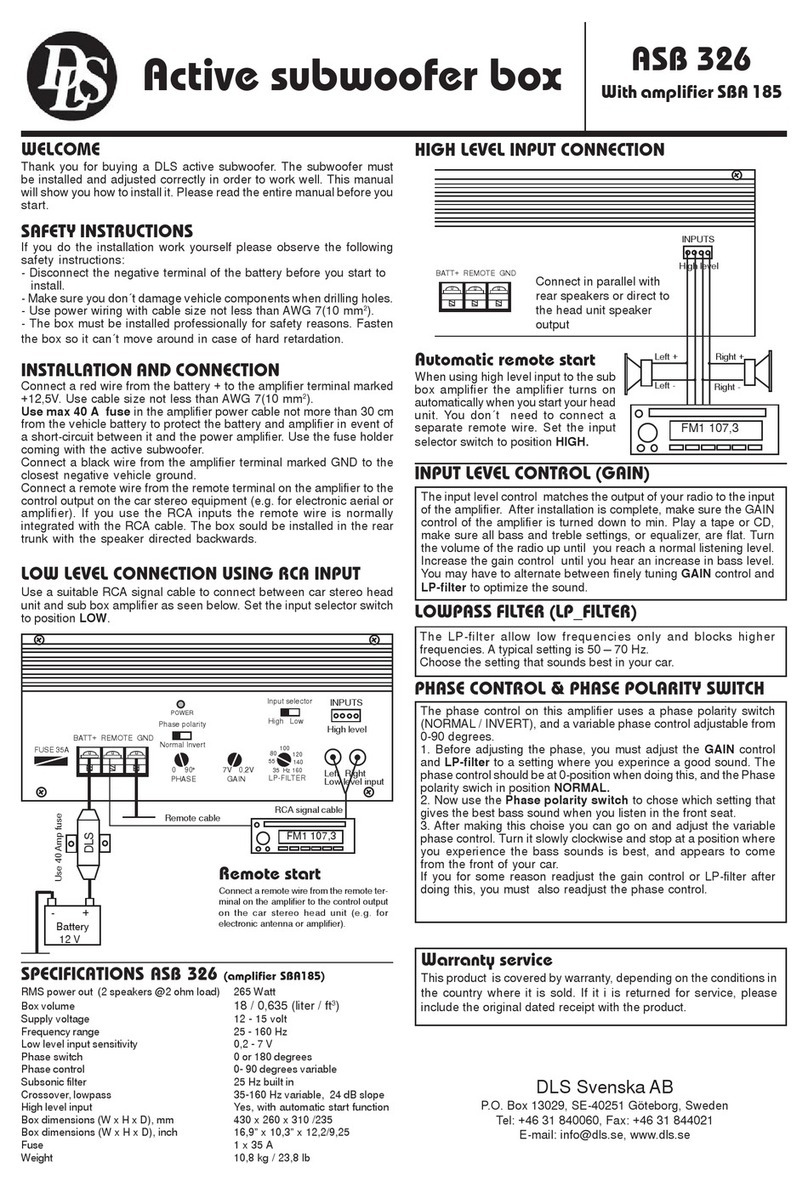
DLS
DLS ASB 326 User manual
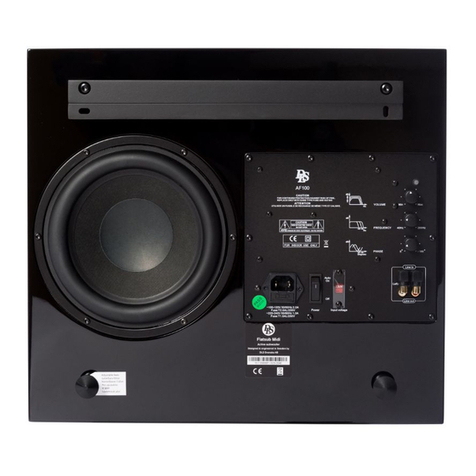
DLS
DLS Flatsub Midi User manual
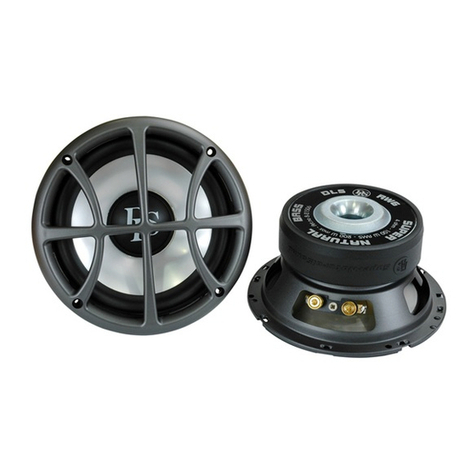
DLS
DLS REFERENCE RW6 User manual
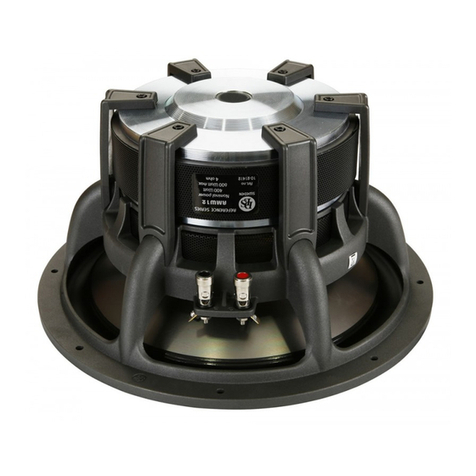
DLS
DLS RMW10 User manual

DLS
DLS RULTSUB3 User manual
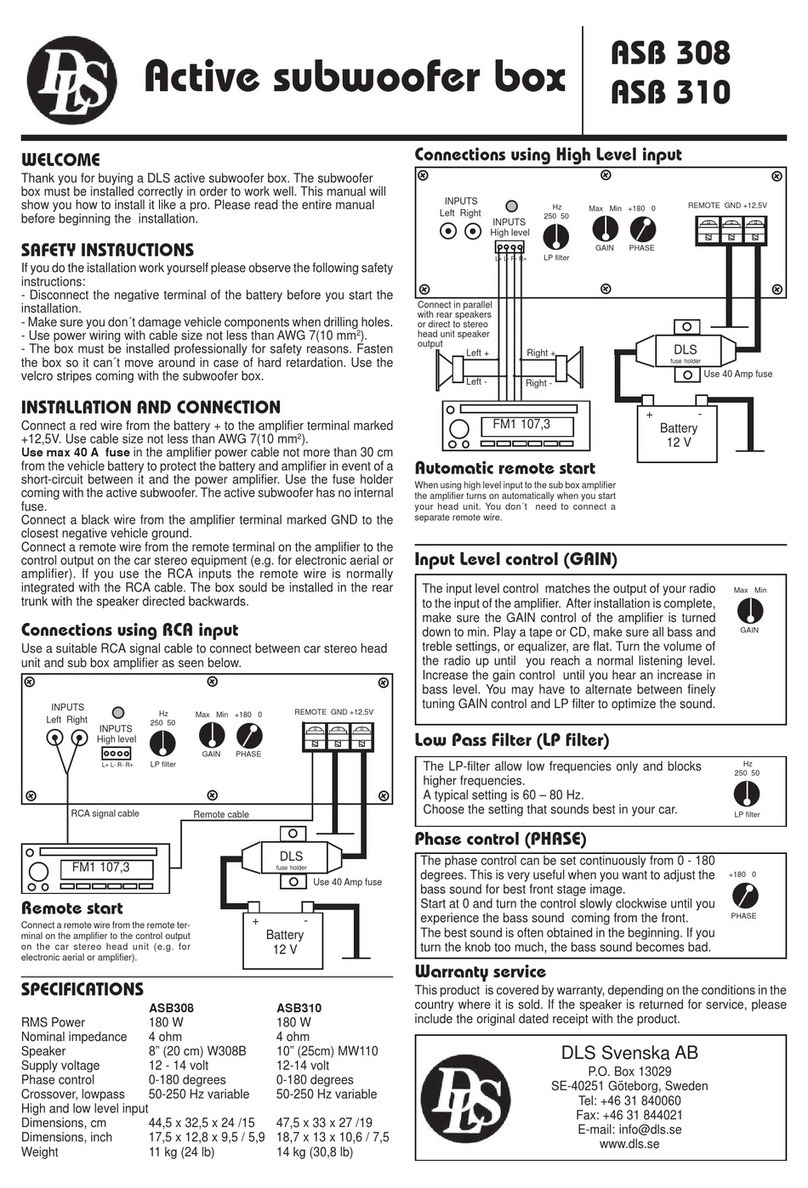
DLS
DLS ASB 308 Installation instructions
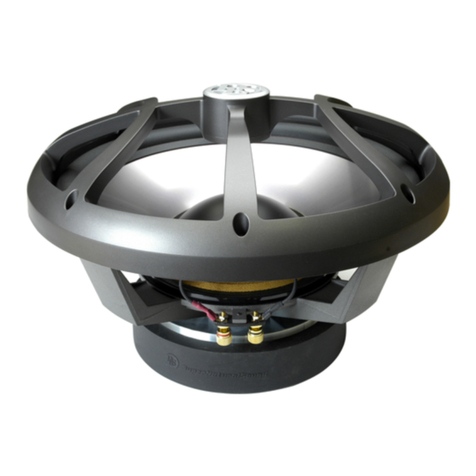
DLS
DLS Nobelium 10i User manual
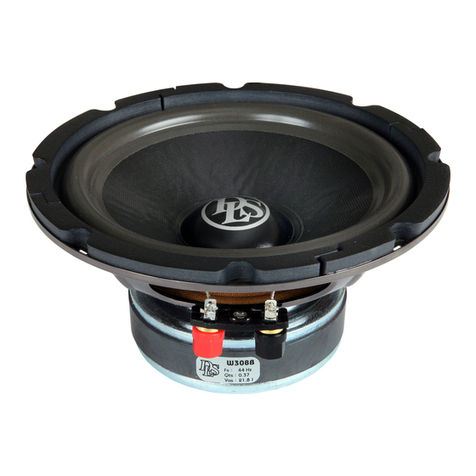
DLS
DLS CLASSIC W308B User manual
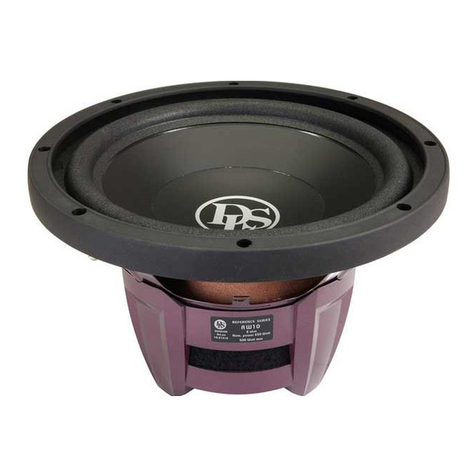
DLS
DLS Reference RW10 User manual
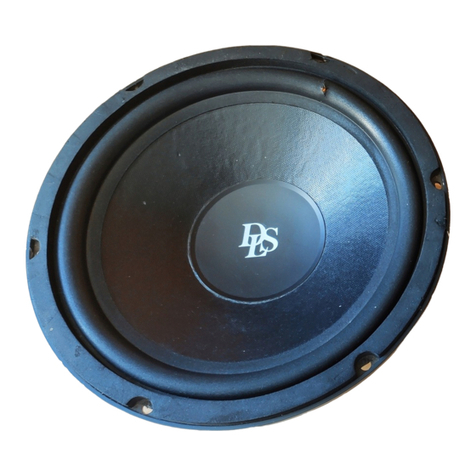
DLS
DLS BRUXW310 User manual
